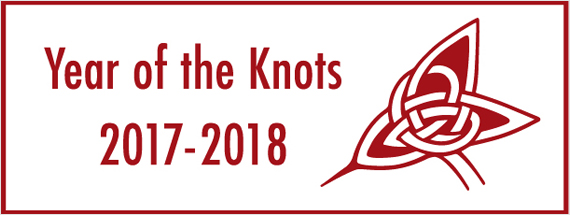
Year of the Knots logo © Janet Essley / EAAFP
Red Knots and Great Knots are small, stocky wading birds. They use large, muddy estuaries around the coast for feeding. The population of both species has been declining at a rate of 2-2.5 % per year in recent decades, primarily as a result of habitat loss at the stopover sites.
The East Asian-Australasian Flyway Partnership (EAAFP) Secretariat is proposing the “Year of the Knots” to call for attention and urgent conservation actions to save these birds.

- IUCN Red List category: Near Threatened
- Food: mainly shellfish in non-breeding areas
- Breeding plumage:mottled grey on top with a cinnamon face, throat and breast and light-coloured rear belly
- Fascinating facts about Red Knots: Saving the Red Knot (The Paulson Institute)
- Red Knot (BirdLife International Data Zone)
- Arctic Migratory Birds Initiative (AMBI) Workplan 2015-2019
- Red Knots Are Battling Climate Change—On Both Ends of the Earth (Audubon magazine)
- Reimagining the Red Knot (Audubon magazine)


- IUCN Red List category: Endangered
- Almost the entire global population (98%) is restricted to the East Asian-Australasian Flyway.
- Food: mainly shellfish in non-breeding areas and insects on breeding grounds
- Breeding plumage: mottled greyish upperparts with some rufous feathering.
- Great Knot (BirdLife International Data Zone)
- The Great Knot (Birds of India)
- AMBI Workplan 2015-2019
- The Magic Birds (Wing Threads)

![[EAAF Exhibition 2] The Migration of Red Knots](https://farm5.staticflickr.com/4315/35649032750_4404f7694e_b.jpg)

The first Knots Drawing Competition was held in 2017 to raise awareness about the Red Knot and Great Knot. Read more here.
Check out the paintings from the countries along East Asian-Australasian Flyway.
Result of the 2018 Competition
Awards of the 2018 Competition

